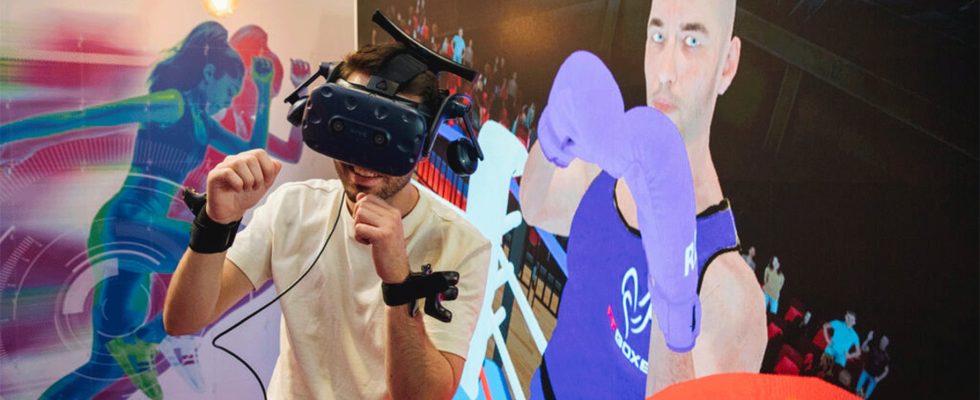There is nothing worse for a boxer than getting injured before a competition. However, there is no question of slowing down on training. What if the solution was found in a virtual reality headset? Researchers from the National Institute for Research in Digital Sciences and Technologies (Inria) came up with this idea: to have the French boxing center train against a virtual opponent. “The Revea project will be 4 years old at the time of the Olympic Games, but we have been working on the subject since the early 2000s, explains Franck Multon, head of the MimeTIC team responsible for the project. The objective was to have a tool that works for the Olympics.”
From outside the ring, the session looks like classic training: the boxer, standing guard, fights in the air. But inside his helmet, he sees in front of him an adversary with a sinister face who strikes him. Sound and colored spots help him know when he is being hit or is touching his rival. From his computer, the coach receives all the information recorded by the device. At the end of each session, coach and athlete analyze the data together. “The boxer’s confidence in his coach is essential, but the interest of virtual reality is to validate and quantify their diagnosis,” points out Bakary Diabira, coach at the France boxing center.
The machine equipped with an eye tracker makes it possible to measure even the movements of the athlete’s eyes. “The benefit of these training sessions is twofold: helping the boxer improve his performance and allowing the machine to absorb the images captured on the boxer to gain precision,” adds Richard Kulpa, teacher-researcher in sports sciences at the UFR Staps of Rennes II University, which coordinates the Revea project.
Although the idea of using virtual reality in a contact sport may seem surprising at first glance, it is actually perfectly logical: one of the most widespread workouts in the noble art is called shadow boxing, a practice which consists of boxing against one’s shadow, in a vacuum, in other words without an opponent. The virtual reality headset ultimately brings realism to the exercise, by confronting the athlete with a virtual alter ego rather than in a vacuum.
Virtual boxing or gymnastics
The initial project already includes three disciplines: boxing, but also gymnastics and athletics, two practices in which visualization is essential to improve performance. Virtual reality will make it possible, for example, to measure the handover times of relay runners, but also to place them in a stressful situation by confronting them with sometimes faster virtual teams.
The initiative will continue after the Olympic Games. In the near future, a new version should allow boxers to oppose – virtually – real champions. Franck Multon details: “The next step will consist of taking fight clips from opponents to virtually box against them.” The system will make it possible to capture and analyze the movements of a rival by drawing them, for example, from television broadcasts of combat, to then adapt the gestures of the machine to its image.
There is, of course, no question of replacing all of athletes’ training with this type of simulation. The headset will constitute a minority part of the sessions, a support and measurement tool. The research team still has challenges to overcome. The use of virtual reality is more complex in some disciplines than in others. “The sport that bothers us a lot is judo. The physical simulation is complex. Doing a virtual arm lock is impossible,” confides Richard Kulpa. These innovations having a cost, the countries likely to obtain them will also benefit from a competitive advantage. And in this area, as in many others, the French face fierce rivalry between two technological powers: the United States and China.
.
